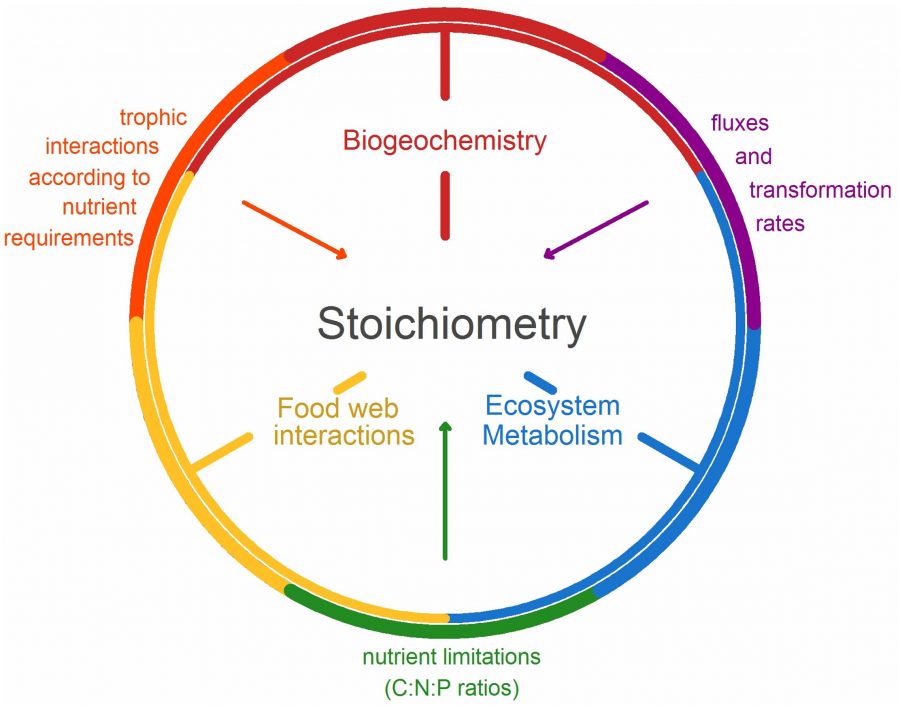AP Chemistry: Stoichiometry
Stoichiometry
I. Counting by weighing
A. To count non-identical (but nearly identical) masses by weighing, find the average mass
1. Average mass is the total mass of the objects over the number of objects
II. Atomic Masses
A. Mass Spectrometer
1. Device used to compare the masses of atoms
B. Each element has its own atomic mass
1. Sometimes called atomic weight
2. Average atomic mass (amu) is average value of an element based on all it’s isotopes and how often they appear on earth
a. Allows us to count atoms easier through stoichiometry
3. Listed on periodic table
III. The Mole
A. A Mole is used as a common unit of measure among the elements
1. 1 mole = 6.022 x 10^23 units
a. Avogadro’s Number
b. refers to atoms for 1 mole of an element
IV. Molar Mass
A. Molar Mass is the mass of one mole of compound in grams
1. a.k.a. Molecular weight
2. found by adding all the individual masses of the atoms in the substance together
i.e. H20 — gt; 2(1.01) + 1(16.00) = molar mass
V. Percent Composition of Compounds
A. Percent composition tells you what percent of a molecule is comprised of one of the constituent atoms
1. Mass of x in one mole of a compound divided by the entire mass of one mole of the compound times 100%
a. All the percentages should add up to 100% if done correctly
VI. Determining the Formula of a Compound
A. Empirical formula shows the ratio of each atom to the other
1. convert the mass percents to grams
i.e. 23.45% = 23.45 grams
2. convert the grams of each atom to moles
3. divide each amount of moles by the smallest number of moles
4. the resulting numbers are the number of each atom in the emp. formula
B. The Molecular Formula gives you the actual formula of the molecule
1. Simply divide the molar mass (given) by the empirical formula’s mass
2. multiply all the empirical formula by the result
i.e. ClCH2 becomes Cl2C2H4 if multiplied by 2
VII. Chemical Equations
A. Chemical Reactions
1. A change on the molecular level (reorganization of atoms)
2. Process is illustrated by a chemical equation
a. reactants — gt; products
3. there must be an equal amount of each atom in the reactants and products (mass must be conserved)
a. to achieve this, the equation might have to be balanced by changing the moles of compounds on either side until there is the same number of each atom on either side
B. The Meaning of a Chemical Equation
1. Gives you the nature of reactants and products
a. provided with the physical state
i. solid (s); gas (g); liquid (l); Aqueous (Aq)
2. Relative numbers of both reactants and products
VIII. Balancing Chemical Equations
A. Balance out the more complex molecules first
B. Begin with the least common atom as well
1. O and H last
C. DONT change the formulas of any reactants of products
1. coefficients only
IX. Stoichiometric Calculations: Amounts of Reactants and Products
A. Actual reactions can’t be done by counting molecules. We must weigh instead
B. Chemical equations can be used to find the masses of reacting chemicals (how much A will react with this much B?)
1. find the amount of a reactant you have in moles
2. create a mole ratio by dividing the moles of the substance mass you want from the number of moles in its partner reactant
i.e. for A, if A + 4BC are reacting, then the ratio is (1/4)
3. multiply known reactant in moles by the ratio for the moles of the other reactant required
4. convert the unknown reactant to grams
X. Calculations Involving a Limiting Reactant
A. Many reactions are mixed in stoichiometric quantities.
1. All the reactants are used up at the same rate
B. When this isn’t true, you must find the limiting reactant (limiting reagent).
C. Finding the limiting reactant is best shown through an example
i.e. N2(g) + 3H2(g) —– gt; 2NH3(g)
there is a 3H2/1N2 ratio required (3:1)
if we have 9H2 and 5N2, the actual ratio is (1.8/1)
Since there isn’t enough N2 to have 3 times the H2, Nitrogen gas is the limiting reactant in this case
1. assuming a ratio of A/B, actual mole ratio gt; required mole ratio = A is limiting reactant, actual mole ratio lt; required = B is limiting
D. The most of a molecule that can be produced with given reactants is called the theoretical yield.
1. Use the limiting reactant to calculate the amount of the product produced
E. The theoretical yield is usually not the true amount produced due to side reactions and other things out of our control
1. The actual yield is sometimes given as a percent (percent yield)
a. The percent yield is calculated by dividing the actual yield by the theoretical yield and multiplying it by 100%
Congratulations! You are now a stoichiometry master!
Source:
- https://www.prescottpapers.com/blog/how-to-pass-college-classes/how-to-pass-college-general-chemistry.php
- https://www.khanacademy.org/science/chemistry/chemical-reactions-stoichiome/stoichiometry-ideal/a/stoichiometry
- http://www.chem4kids.com/files/react_stoichio.html
















